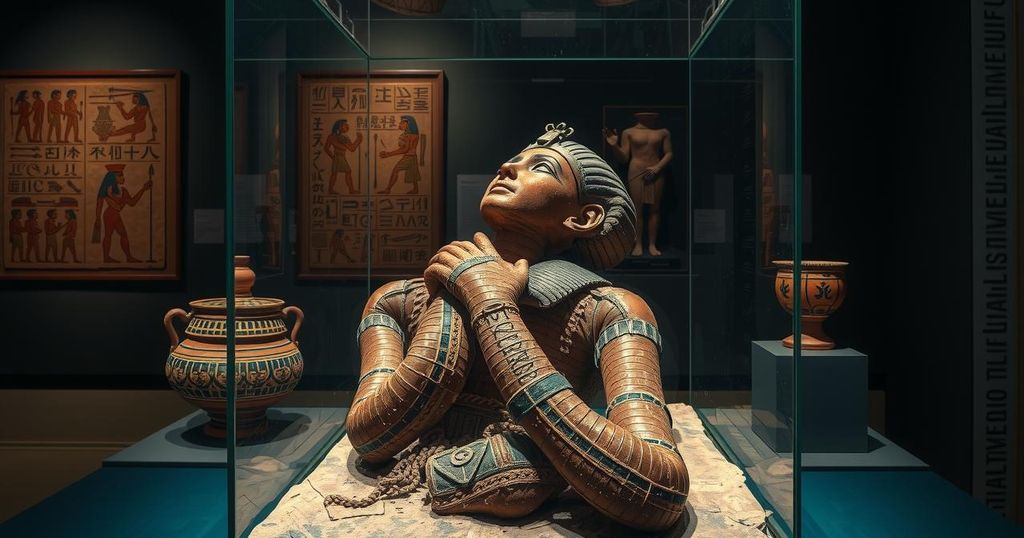Recent research has clarified that the ancient Egyptian mummy known as the ‘Mysterious Lady’ was misidentified as pregnant and suffering from cancer. The believed fetus was proven to be embalming materials, and the skull irregularities were linked to mummification rather than disease. This has sparked a discussion about the importance of meticulous analysis and validation in mummy studies.
A comprehensive analysis has clarified the contentious narrative surrounding the ancient Egyptian mummy known as the “Mysterious Lady.” Initially presumed to be pregnant and afflicted with nasopharyngeal cancer, recent investigations have revealed that the internal mass identified as a fetus was actually related to the embalming process. This reassessment concludes a four-year-long scientific discussion on this unique specimen, originally discovered in Luxor and housed in Poland since 1826.
The initial claims regarding the existence of a fetus were based on CT scans portraying an abdominal mass presumed to signify a pregnancy. However, the revised study contested that assertion, showing this mass was instead made up of embalming materials, a common practice in ancient Egyptian funerary customs. Experts have cautioned against hastily concluding the presence of fetal remains without clear anatomical evidence, a point previously articulated by radiologist and mummy expert Sahar Saleem.
Additionally, the purported signs of nasopharyngeal cancer, inferred from irregularities observed in the skull, have now been correlated to the mummification processes rather than disease. The trauma inflicted during brain removal significantly contributed to the observed skull deformities. The research team unanimously found no indicators of cancer growth, emphasizing the necessity for caution against misinterpreting anatomical artifacts as medical conditions.
This episode underscores the necessity for meticulous scrutiny in interpreting ancient mummified remains. Embalming practices can render biological interpretations challenging, leading to potential misconceptions. The swift dissemination of the initial claims about the “pregnant mummy” reflects a crucial lesson on the need for careful verification in scientific findings, especially in mummy studies. The researchers recommend broader inquiries into maternal health in ancient Egypt in future studies.
Ultimately, this resolution reinforces the significance of collaborative research and the careful analysis required in evaluating findings related to ancient histories. The recent revelations serve as a vital reminder of the complexities involved in studying mummified bodies and the importance of substantiating claims with robust evidence before public dissemination.
The examination of the Mysterious Lady has conclusively refuted previous claims regarding her being pregnant and having cancer. The abdominal mass was found to be embalming materials, while the cranial deformities were attributed to the mummification process. This instance serves as a poignant reminder of the intricacies involved in the study of ancient remains and underscores the need for rigorous verification in scientific research. Future investigations should focus on broader topics in ancient health rather than isolated claims.
Original Source: indiandefencereview.com






